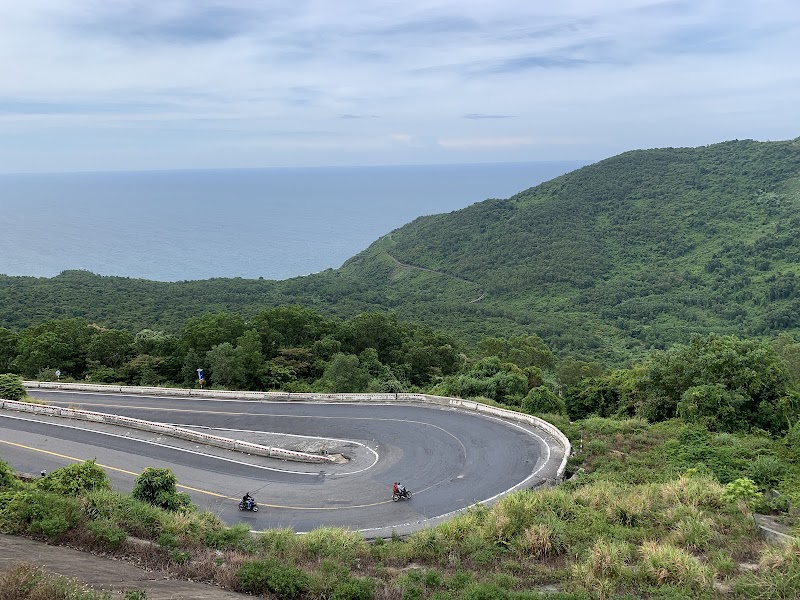Explore the Marble Mountains near Da Nang, Vietnam, where ancient caves and serene pagodas meet stunning ocean panoramas. This guide offers practical tips, trail details, and cultural insights for a rewarding day of adventure.
Start Early to Beat the Heat
Temperatures can rise quickly on the exposed stone paths, so begin your hike early in the morning or late afternoon when the sun is less intense.
Wear Gripped Footwear
The rocky steps and cave interiors can be slippery, especially after rain. Sturdy, non-slip shoes will keep you safe and comfortable.
Carry Sufficient Water
There are few vendors once you enter the mountains. Bring at least 1.5 liters of water to stay hydrated through the climb.
Respect Cultural Sites
Pagodas and Buddha statues are active places of worship. Maintain quiet, avoid touching sacred objects, and dress modestly to honor local customs.
Scaling Marble Mountains: Caves, Pagodas, and Ocean Views in Da Nang
Rising sharply from the coastal plains near Da Nang, the Marble Mountains present a raw, hands-on adventure where stone meets sea in a rugged embrace. The journey begins along well-trodden paths lined with verdant foliage, as the mountains dare you to explore their depths. Prepare for roughly 1.5 kilometers of uneven stone steps and natural trails, gaining about 150 meters in elevation—enough to engage casual hikers and seasoned trekker alike.
Your first encounter is with a series of limestone caves, their entrances gaping like silent guardians. Step into the cool shadows where slender beams of light highlight ancient Buddhist statues and intricate carvings etched deep into the rock face. The air here feels alive, thick with centuries of whispered prayers and stories held tight by stalactites. The caves occasionally narrow, demanding care and attentiveness—watch your footing.
Emerging from the caves, a cluster of pagodas reveals itself, worn but dignified atop jagged cliffs. Their faded ochre and white walls, adorned with delicate dragon sculptures, imprint a quiet spirituality on the rocky landscape. Here, incense smoke often coils into the breeze as soft chants linger, making a pause at these sites more than just a break—it’s a moment to engage with the culture firmly rooted in stone.
Stretching beyond the pagodas, the trail leads to the summit ridges where panoramic views await. The South China Sea unfolds below in refreshing teal waves, the ocean’s restless currents pushing forward with a fierce pulse against the shore. Watch fishing boats scrawl white trails across the water, and patches of mangrove swell near the base, a reminder of this terrain’s intersection of land and sea.
For practical planning, aim to start early in the morning or late afternoon to avoid the midday heat and busy visitor peaks. The stone pathways can be slippery, so well-gripped footwear is essential. Hydration is a must: carry at least 1.5 liters of water, as vendors are sparse beyond the entrance. Along the way, embrace the steady rhythm of the climb—the mountains don’t rush but assert their will steadily.
This adventure balances nature’s raw force with cultural depth, rewarding those prepared to move thoughtfully through it. Whether you’re here for reflection among the pagodas, the thrill of cave exploration, or the sheer satisfaction of ocean vistas from rugged heights, Marble Mountains offers a fierce, memorable connection to Vietnam’s coastal heart.
Nearby Trips
All Adventures
Boat Charters
Water Activities
Adventures near Da Nang
Discover the unique and memorable adventures that make Da Nang special.
Frequently Asked Questions
How long does it typically take to explore the Marble Mountains?
Plan for about 2 to 3 hours to explore the caves, pagodas, and reach several viewpoints at a comfortable pace, including time for rest and photography.
Are the caves safe for visitors?
Yes, but caution is necessary as some cave sections are uneven, narrow, and dimly lit. Wear appropriate footwear and be mindful of your footing.
Can I visit the Marble Mountains year-round?
You can visit any time of year, but spring and fall offer the best balance of mild weather and fewer crowds. Summers can be hot and winters misty but still manageable.
Is there an entrance fee to explore the area?
Yes, a small entrance fee payable at the site helps maintain the park and cultural sites. Fees vary slightly but are generally affordable.
Are the Marble Mountains accessible for children or elderly visitors?
The terrain is moderately challenging with many stairs and uneven surfaces, so young children and seniors with limited mobility should assess their comfort with the hike.
What cultural etiquette should be observed at the pagodas?
Dress modestly, remove shoes before entering temple buildings, keep noise low, and refrain from touching statues or sacred objects to respect religious customs.
Recommended Gear
Sturdy Hiking Shoes
Provides grip and stability on rocky, uneven surfaces and slippery cave floors.
Reusable Water Bottle
Hydration is critical, especially during hotter months when sweating is more intense.
Lightweight Rain Jacket
Protects against sudden showers common in spring, ensuring comfort during the hike.
Sunhat and Sunscreen
Shields your skin from harsh sunlight, particularly on exposed trails and pagoda platforms.
Local Insights
Hidden Gems
- "Am Phu Cave, a quiet cave less frequented by tourists, offers an intimate setting with ancient carvings."
- "The back trail descending towards Non Nuoc Beach provides a less crowded route with peaceful forest sections."
Wildlife
- "Watch for colorful butterflies flitting near the flowering shrubs and shy squirrels darting through trees."
- "Migratory birds sometimes rest around freshwater pools on cooler mornings."
History
"The Marble Mountains have served as key Buddhist pilgrimage sites for centuries, with many statues and pagodas dating back to the 17th century, preserving Vietnam’s religious art and architecture."

